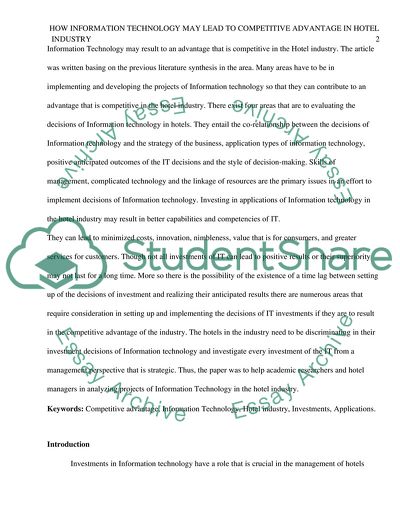Cite this document
(How Information Technology Applications May Lead to Competitive Advantage in Hotel Industry Research Paper Example | Topics and Well Written Essays - 5000 words, n.d.)
How Information Technology Applications May Lead to Competitive Advantage in Hotel Industry Research Paper Example | Topics and Well Written Essays - 5000 words. https://studentshare.org/information-technology/1864723-how-information-technology-applications-may-lead-to-competitive-advantage-in-hotel-industry
How Information Technology Applications May Lead to Competitive Advantage in Hotel Industry Research Paper Example | Topics and Well Written Essays - 5000 words. https://studentshare.org/information-technology/1864723-how-information-technology-applications-may-lead-to-competitive-advantage-in-hotel-industry
(How Information Technology Applications May Lead to Competitive Advantage in Hotel Industry Research Paper Example | Topics and Well Written Essays - 5000 Words)
How Information Technology Applications May Lead to Competitive Advantage in Hotel Industry Research Paper Example | Topics and Well Written Essays - 5000 Words. https://studentshare.org/information-technology/1864723-how-information-technology-applications-may-lead-to-competitive-advantage-in-hotel-industry.
How Information Technology Applications May Lead to Competitive Advantage in Hotel Industry Research Paper Example | Topics and Well Written Essays - 5000 Words. https://studentshare.org/information-technology/1864723-how-information-technology-applications-may-lead-to-competitive-advantage-in-hotel-industry.
“How Information Technology Applications May Lead to Competitive Advantage in Hotel Industry Research Paper Example | Topics and Well Written Essays - 5000 Words”. https://studentshare.org/information-technology/1864723-how-information-technology-applications-may-lead-to-competitive-advantage-in-hotel-industry.


